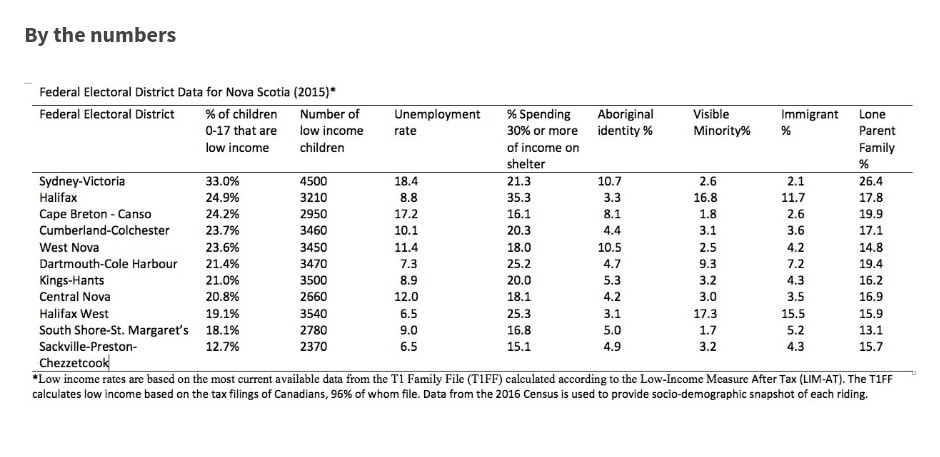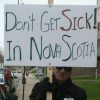KJIPUKTUK (Halifax) – Child poverty rates in Nova Scotia mostly range between one in three and one in five. The numbers in Cape Breton and urban HRM, and in the federal riding of Colchester-Cumberland are particularly devastating.

Actually, it’s really bad almost anywhere in the province. All Nova Scotia federal ridings are above the national average, except the suburban riding of Sackville-Preston-Chezzetcook. And even that is deceiving, since the African Nova Scotian communities of North and East Preston contained therein experience a child poverty rate hovering around 40%.
The numbers in today’s story are from a report issued by Campaign 2000, with a focus on child poverty in federal ridings across Canada.
In its income calculations the report used data derived from 2015 tax filings by Canadians, 96% of whom file.
Campaign 2000 is a cross-Canada public education movement to build Canadian awareness and support for the 1989 all-party House of Commons resolution to end child poverty in Canada by the year 2000.
Well, that didn’t quite work out. The child poverty rate in Nova Scotia now is 19.3% higher than it was in 1989, writes Lesley Franck in an excellent commentary on the report’s findings published by the Nova Scotia chapter of the Canadian Center for Policy Alternatives (CCPA).
For each riding the report also includes census data on rents, unemployment rates (18,4% in Sydney-Victoria, 17,2% in Cape Breton-Canso) and the percentage of lone parent families and aboriginal families.
I don’t have time to delve deeply into the numbers, but I wanted to at least note the occasion of the report’s publication. Check it out.
See also:
- Where the poor people live. Stats Canada puts Nova Scotia poverty on the map
- News brief: Rent poor in Nova Scotia
- News brief: Where the shitty rental units are
- Census 2016: African Nova Scotian poverty rates through the roof, unemployment numbers terrible
- Out of options: Core housing needs in Nova Scotia on the rise
- Halifax’s shifting landscape of wealth and poverty
If you can, please support the Nova Scotia Advocate so that it can continue to cover issues such as poverty, racism, exclusion, workers’ rights and the environment in Nova Scotia. A paywall is not an option, since it would exclude many readers who don’t have any disposable income at all. We rely entirely on one-time donations and a tiny but mighty group of dedicated monthly sustainers.



